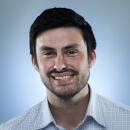Summer means science for these minority students
- Share via
As Carolina Herrera explained her biomedical research on inflammatory bowel disease, her audience sat wide-eyed, listening intently while chomping on egg sandwiches.
The feasibility of a drug that would heal ulcers in the colon is not typical conversation fodder for teenagers — let alone over breakfast. But the students in the room were budding scientists unfazed by the seemingly unappetizing topic.
The 16 students are taking part in the Latino & African-American High School Internship Program — a rigorous science program at Children’s Hospital Los Angeles aimed at encouraging minority students to pursue a career in science or medicine.
Under the watch of professionals, they conduct their own research in the hospital’s laboratories. A pair of students have spent weeks conducting research on bacterial meningitis among infants; others have studied cancer and HIV. Some have analyzed how the human lung develops, while another researched eye tumors.
The program began in 2005, after Dr. Emil Bogenmann, a Swiss-born molecular scientist, recognized a lack of diversity among students in a similar program he led for students from the Marlborough School, a private all-girls institution in Hancock Park. He decided then to build a program that would aggressively recruit minority public school students from underrepresented areas of Los Angeles County.
“This country gave me an opportunity to do my career, so I got to give something back,” he said. “I decided that what I can do is teach research science to students who deserve better than what they have.”
To be eligible for the program, youths must attend school in the Los Angeles Unified School District or Compton Unified School District or live within their boundaries.
Carolina, 17, wakes up about 6 a.m. to take a shuttle from her home in South Gate to the hospital.
As she walks through the lab, her lab coat hangs just inches off the ground. “It’s the smallest one they had,” she said with a laugh.
When she started, she was thrilled to work alongside some of the best in the field. Then a bit of fear crept in.
“I was intimidated. I thought I was going to mess up an experiment or not know how to do the calculations,” she said. “I’m no longer shaky.”
Bogenmann frequently visits schools in the two districts, hoping to garner interest among students, teachers and counselors. Apart from the research component, the program also boasts SAT prep courses, financial aid workshops and college counseling workshops.
All 77 students who have taken part in the program are either attending college or have graduated, Bogenmann said.
About 100 students apply each year for the 16 spots, but there are still challenges in reaching certain groups.
The program, for example, struggles to attract male applicants. This summer, there are just four; last year, there was one.
African American students, particularly males, are also underrepresented in the program. Bogenmann has reached out to community groups to help recruit students, but has yet to consistently find black students to participate.
“I think one can only do that by getting a champion in one of those schools — that’s the challenge,” he said.
Some area schools are not receptive and fail to see the potential in their students, Bogenmann said. “I get responses like, ‘You know, the type of students you’re looking for, we just don’t have,’ ” he said. “That is just not right.”
Chuck Uzoegwu, 19, participated in the program in 2010 and is now studying business and is pre-med at USC. He first noticed a slow attrition of fellow African American classmates when attending King Drew Medical Magnet High School. In the summer program, he was one of only a few African American students. He returned to the hospital this summer to volunteer in the lab and said he has yet to meet a role model there who looks like him.
“It disturbs me. It’s nice to come into a place and see other people that are like you,” he said. “It definitely feels like the higher up you go in education, the higher up you go in any organization, the less African American males you see.”
Still, working with the scientists and doctors is an invaluable experience, he said, adding that “being around people in a lab like this makes you aim higher.”
Jacqueline Hernandez, 17, of Watts has typical teenage angst. She worries about not scoring high enough on the SAT exam to be accepted to her dream school, Johns Hopkins University in Baltimore. She was concerned that since her school does not offer Advanced Placement courses, she’d struggle to keep up with other students in the program. And she fretted that the other girls wouldn’t like her.
But her most prominent, almost daily worry was that her college career would be derailed before it began.
All three of her sisters had had a child by the time they were 18. Jacqueline at times felt that she was destined to follow in their footsteps.
“Dr. B. told me, directly to my face, ‘You’re not going to be there, you’re the one that is going to break the cycle,’ ” she said.
Her research is centered around the bacteria that can produce deadly meningitis among infants.
“I now know that my future doesn’t end with me holding a baby,” she said. “It’s going to end with me trying to find a cure for a baby.”
More to Read
Sign up for Essential California
The most important California stories and recommendations in your inbox every morning.
You may occasionally receive promotional content from the Los Angeles Times.














